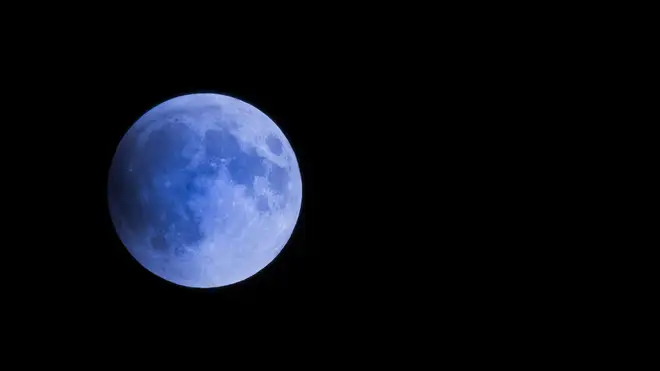
Iain Dale 10am - 1pm
30 August 2023, 15:17 | Updated: 30 August 2023, 15:20

Stargazers are preparing for a rare event this month - with a blue moon set to appear for the last time this decade.
A second supermoon of the month is set to appear this week in an event that will not occur again until the 2030s.
The spectacle will be visible across the UK as the full moon reaches its closest point to Earth.
But it is also expected to raise tides above normal, worsening the impact of Hurricane Idalia.
A supermoon is a full moon which appears larger in the sky because it is closer to the Earth.
Despite its name, a blue moon does not appear blue - though it is possible if there has been major disruption to the Earth’s atmosphere.
Dr Greg Brown, astronomer at Royal Observatory Greenwich said: "The most common definition of a blue moon is that it is the second full moon in one calendar month."
Nasa previously said: "The key to a blue moon is having in the air lots of particles slightly wider than the wavelength of red light (0.7 micron) – and no other sizes present.
"This is rare, but volcanoes sometimes spit out such clouds, as do forest fires."
With extreme weather conditions having caused several wildfires across the world, there is a chance that it will appear blue.

The upcoming supermoon is expected to raise tides higher than usual due to its intensified gravitational pull - just as Hurricane Idalia hits Florida's west coast.
"The timing is pretty bad for this one," Brian Haines, the meteorologist in charge at the National Weather Service office in Charleston, South Carolina, said.
It is expected to make tidal flooding worse across several states.

Rare super blue moon set to delight stargazers
The first supermoon appeared on Tuesday, August 1.
The even bigger supermoon - the blue moon - is set to be visible from Thursday.
The moon will rise at around 8pm (BST) on Thursday and set at around 6am the following day.
The peak of the full moon - when the near side of it is completely lit up by the sun is at 2.35am on Friday morning.
The best time to catch a glimpse is when your local conditions are best suited to a clear sky - low cloud cover, favourable weather, and no obstructions on the horizon - such as buildings or trees.
Astronomer Professor Don Pollacco, department of physics, University of Warwick, said: "One of the flukes of nature is that the apparent size of the moon can be very similar to that of the sun.
"This occurs because, while the moon is much smaller than the sun, it is much closer to the Earth."
He added: "To see the full moon, look east after sunset. If you have a clear horizon it should be obvious.
"The moon is so bright that we can see it when it's not particularly dark or even if the weather isn't particularly clear.
"It will be visible all night and set in the west around sunrise."